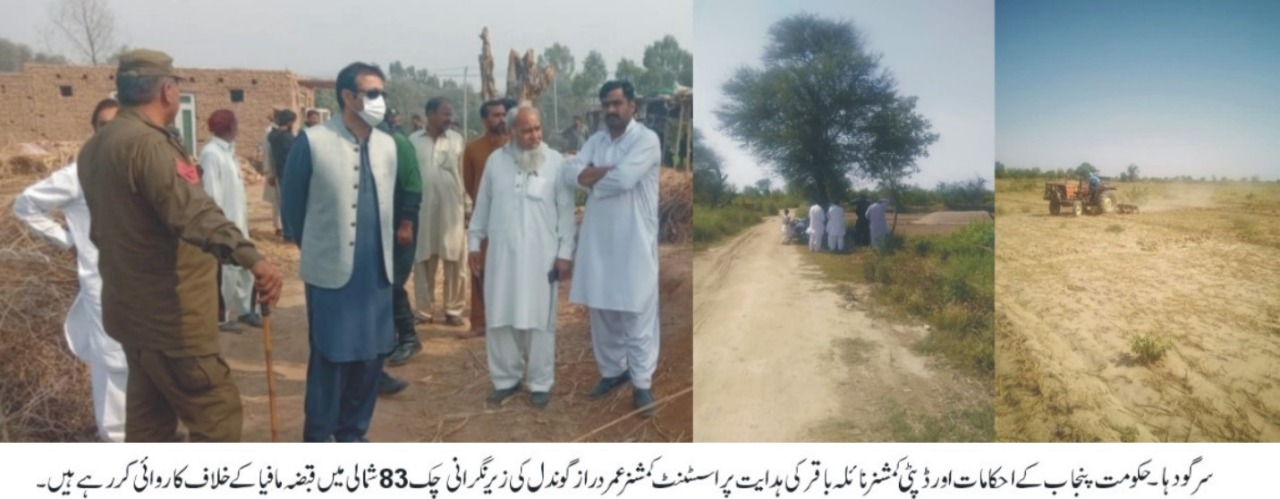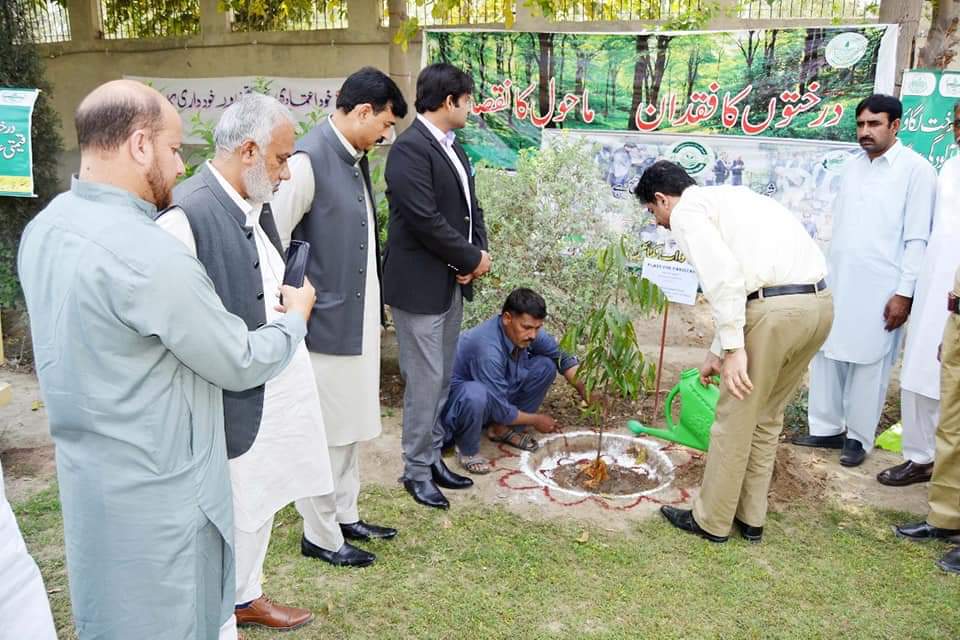By: Muhammad Yasir Khurshid,
Research and Development Officer, Engro Fertilizers Multan, Pakistan
Pakistan, one of the world’s leading cotton producers, is grappling with the far-reaching consequences of climate change, which are taking a severe toll on the country’s cotton sector. Rising temperatures, erratic rainfall patterns, water scarcity, soil degradation, pest attacks, and diseases are among the multiple challenges afflicting cotton production in Pakistan.
The alarming increase in temperature, attributed to climate change, stands as a major hurdle for cotton production in the country. As temperatures soar, the growth and development of cotton crops suffer. Higher temperatures hamper the plants’ ability to photosynthesize, leading to reduced yields and a decline in cotton quality. Moreover, heat stress during the flowering stage triggers the shedding of flowers and bolls, further compromising the potential yield.
In addition to rising temperatures, changes in rainfall patterns are significantly impacting cotton production in Pakistan. The increasingly erratic rainfall, accompanied by longer dry spells, is causing water stress in cotton crops. This, in turn, stunts growth and diminishes yields. The occurrence of waterlogging and flooding due to heavy rains further exacerbates the damage to crops, resulting in productivity losses.
Furthermore, the depletion of groundwater reserves due to over-extraction has emerged as a pressing issue in Pakistan’s cotton-growing regions. The resulting water scarcity has left farmers struggling to adequately irrigate their crops. As a consequence, cotton production has become increasingly dependent on unpredictable and insufficient rainwater, further intensifying the challenges faced by farmers.
The spread of pests and diseases in cotton crops has been accelerated by climate change. Higher temperatures and extended growing seasons create favorable conditions for the proliferation of pests like bollworms and whiteflies, causing significant harm to cotton crops. Prolonged exposure to heat stress weakens the plants, rendering them more susceptible to diseases.
To address these challenges, farmers must embrace climate-smart agricultural practices tailored to the specific needs of cotton production in Pakistan. This includes adopting drought-resistant cotton varieties, implementing improved irrigation management techniques, and employing integrated pest management strategies. Collaboration between policymakers and stakeholders is also crucial to tackle water scarcity and soil degradation, which exacerbate the impact of climate change on cotton production.
Climate-smart agricultural practices encompass a range of techniques and approaches that enable farmers to adapt to climate change while reducing greenhouse gas emissions and promoting sustainable development. In the context of cotton production in Pakistan, some key climate-smart agricultural practices that can be adopted include:
- Crop Diversification: Farmers can break pest cycles, enhance soil health, and mitigate climate variability risks by cultivating different crops in rotation with cotton.
- Conservation Agriculture: Practices such as zero-tillage and conservation tillage aid in conserving soil moisture, reducing erosion, and thereby improving soil health and yields.
- Water-Efficient Irrigation: Utilizing water-efficient irrigation systems like drip irrigation can minimize water usage and enhance water use efficiency.
- Improved Fertilizer Management: Implementing integrated nutrient management practices involving balanced use of organic and inorganic fertilizers can improve soil fertility while reducing the carbon footprint of cotton production.
- Integrated Pest Management: Farmers can reduce the use of synthetic pesticides, which have adverse effects on human health and the environment, by adopting integrated pest management practices such as employing biopesticides.
- Improved Weather Forecasting: Enhanced weather forecasting capabilities can empower farmers to make informed decisions regarding planting, irrigation, and pest management, thereby improving yields and minimizing risks.
Effective fertilizer management plays a pivotal role in climate-smart cotton production in Pakistan. Excessive or imbalanced use of fertilizers can lead to soil degradation, water pollution, and increased greenhouse gas emissions. To ensure better fertilizer management, farmers should consider the following practices:
- Soil Testing: By conducting soil tests, farmers can determine their soil’s nutrient status and the precise fertilizer requirements of their cotton crops. This enables more targeted and efficient fertilizer application, reducing the risk of over-application.
- Value-Added Specialty Fertilizers: Formulating value-added specialty fertilizers with nutrient sources less prone to fixation and nutrient losses can augment the performance of essential nutrients. These fertilizers minimize the environmental impact of cotton production while providing the necessary nutrients for optimal plant growth.
- Timing and Placement of Fertilizers: Applying fertilizers at the right time and in the right place optimizes nutrient uptake by cotton plants. Split dosing of nitrogen fertilizers reduces leaching losses and improves nitrogen use efficiency.
- Use of Slow-Release and Controlled-Release Fertilizers: Slow-release fertilizers deliver nutrients to cotton plants over an extended period, reducing the need for frequent applications and enhancing nutrient use efficiency.
- Precision Agriculture Techniques: Employing precision agriculture techniques like variable-rate application allows farmers to apply fertilizers more precisely, reducing over-application and minimizing environmental impacts.
By adopting these improved fertilizer management practices, Pakistani farmers can enhance the productivity and sustainability of their cotton production systems while reducing their environmental footprint.
Boron, an essential micronutrient, holds great significance for climate-smart cotton production in Pakistan. Proper boron management plays a crucial role in the growth and development of cotton plants, facilitating cell wall formation, nutrient transport, and hormone regulation. The reasons why boron is essential for climate-smart cotton production in Pakistan include:
- Improved Crop Growth and Yield: Adequate boron supply enhances crop growth, photosynthesis, and cotton yield, contributing to food security and economic development.
- Drought Tolerance: Boron aids in maintaining plant water balance and regulating stomatal activity, thereby enhancing cotton plants’ ability to withstand water stress associated with climate change.
- Pest and Disease Resistance: Sufficient boron supply improves cotton plants’ resistance to pests and diseases, reducing the reliance on synthetic pesticides and promoting sustainable agriculture.
- Soil Health: Boron is involved in vital soil processes, including nutrient cycling, organic matter decomposition, and soil pH regulation. Adequate boron supply improves soil health, contributing to soil conservation and carbon sequestration.
Both boron and zinc are crucial micronutrients for cotton plants, and their proper management holds the potential to improve cotton production in Pakistan’s changing climate. Optimal supplies of boron and zinc improve crop growth, photosynthesis, yield, drought tolerance, pest and disease resistance, nutrient use efficiency, and carbon sequestration. However, excessive application of these micronutrients can result in negative environmental impacts such as soil and water pollution. Therefore, adopting best management practices for their application, including soil testing, proper timing and placement, and recommended dosage of fertilizers, is of paramount importance. By implementing these practices, farmers in Pakistan can optimize micronutrient management, promote sustainable cotton production, and contribute to climate-smart agriculture.
In conclusion, the impact of climate change on cotton production in Pakistan is proving to be profound. The challenges posed by rising temperatures, changing rainfall patterns, water scarcity, soil degradation, pest attacks, and diseases necessitate urgent action. Embracing climate-smart agricultural practices, adopting better fertilizer management techniques, and recognizing the importance of boron and zinc for cotton production are essential steps towards mitigating the impacts of climate change on Pakistan’s cotton sector. By doing so, farmers can enhance their productivity, ensure the sustainability of cotton production, and contribute to a climate-resilient future













